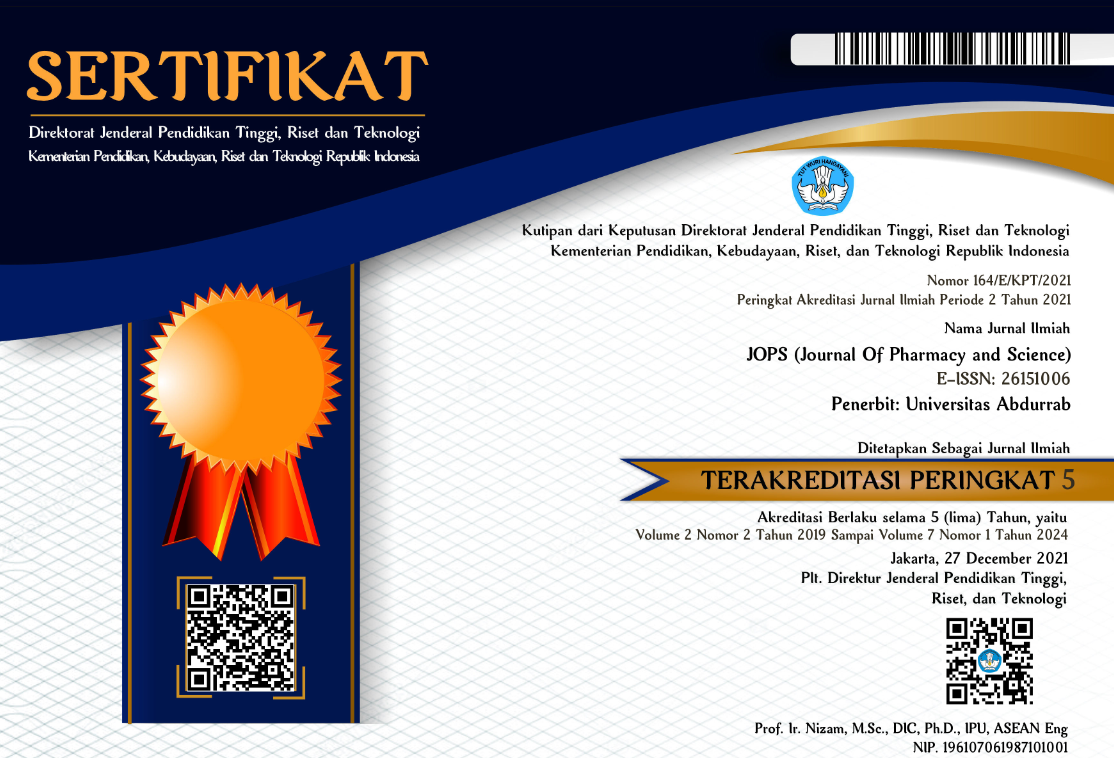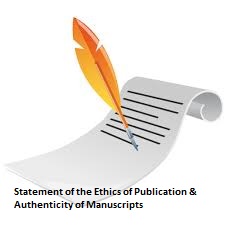Antimicrobial Potential of Ethyl Acetate Fraction of Mangkokan Leaves (Nothopanax scutellarius (Brum.f.) Fosberg) Against Various Pathogenic Microbes
Abstract
Mangkokan leaves (Nothopanax scutellarius (Brum.f.) Fosberg) is an ornamental plant that usually grows in home gardens, relatively popular and is used as an alternative medicine such as improving the digestive system, preventing hair loss, treating wounds, anti-inflammation, improving blood flow, preventing the appearance of symptoms of anemia and antioxidants. This study aims to determine the inhibitory power of extracts and ethyl acetate fractions towards Salmonella gastroenterites, Lactobacillus rhamnosus, Eschericia coli, Bacillus subtilis, and Candida albicans. The ethanol extract of mangkokan leaves contains alkaloids, saponins, phenolics, steroids and terpenoids, and the ethyl acetate fraction of mangkokan leaves shows that it contains phenolic, steroids and terpenoids. The ethanol extract and ethyl acetate fraction of mangkokan leaves has the ability to inhibit the growth of Salmonella gastroenterite, Lactobacillus rhamnosus, E.coli, B.subtilis, and C.albicans, with moderate categories of antibacterial activity and weak category for antifungal activity. It can be concluded that mangkokan leaf extracts and fractions have the potential to be antimicrobial.
Copyright (c) 2023 JOPS (Journal Of Pharmacy and Science)

This work is licensed under a Creative Commons Attribution-NonCommercial-ShareAlike 4.0 International License.
1. Copyright of all journal manuscripts is held by the JOPS (Journal Of Pharmacy and Science)
2. Formal legal provisions to access digital articles of electronic journal are subject to the provision of the Creative Commons Attribution-ShareAlike license (CC BY-NC-SA), which means that JOPS (Journal Of Pharmacy and Science) is rightful to keep, transfer media/format, manage in the form of databases, maintain, and publish articles.
3. Published manuscripts both printed and electronic are open access for educational, research, and library purposes. Additiponally, the editorial board is not responsible for any violations of copyright law.
licensed under a Creative Commons Attribution-ShareAlike 4.0 International License.
 PDF (Bahasa Indonesia)
PDF (Bahasa Indonesia)
 Abstract views: 71
Abstract views: 71
 downloads: 87
downloads: 87

 :
:
1.png)








